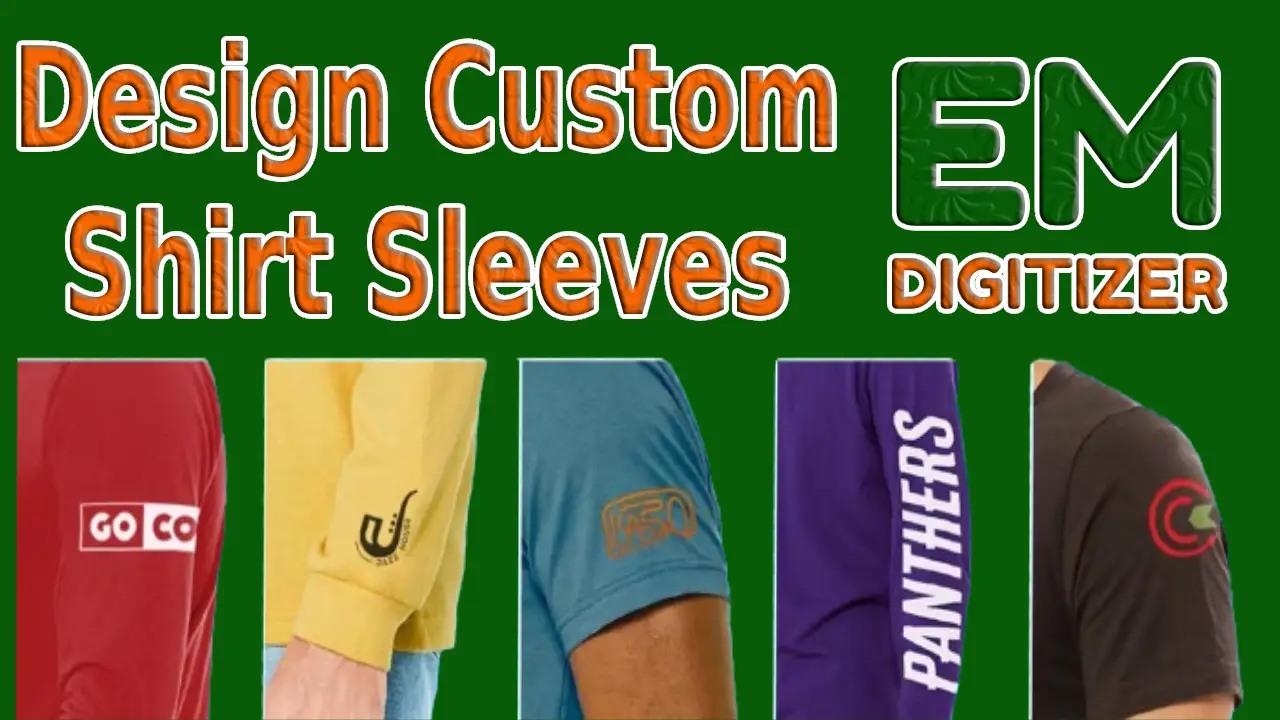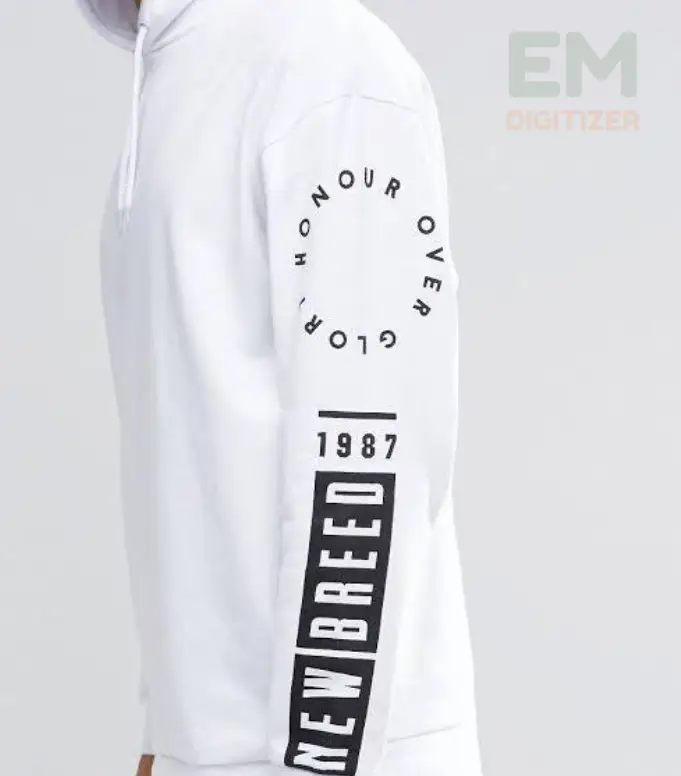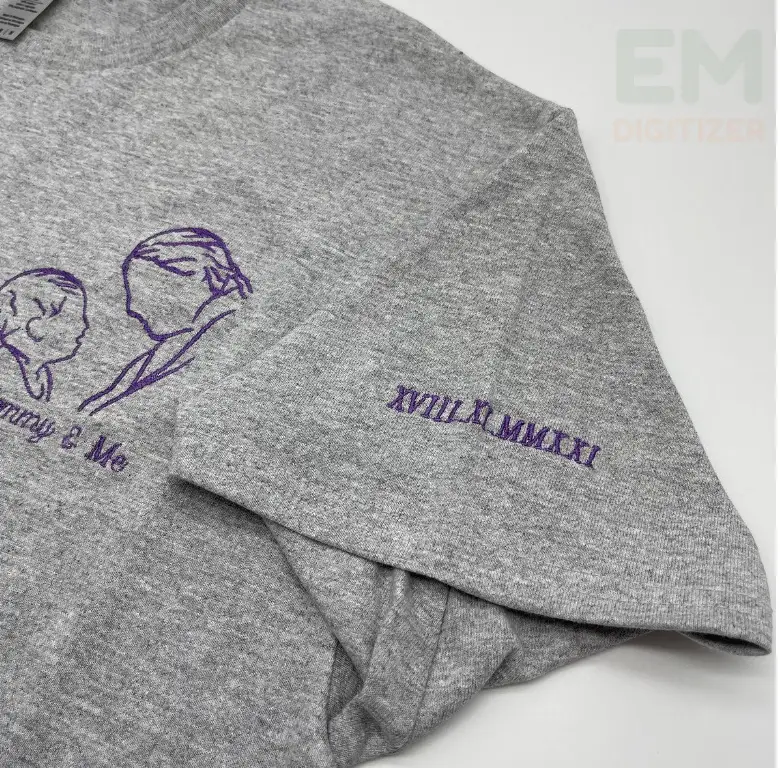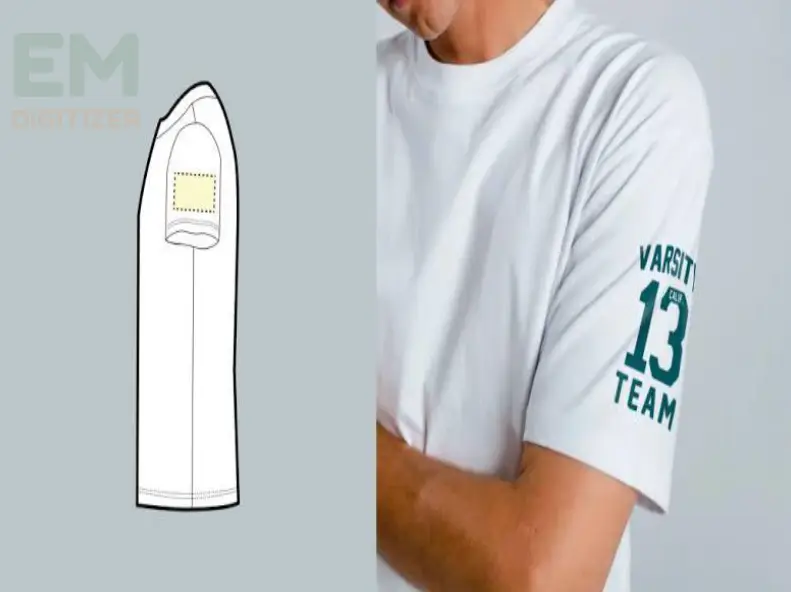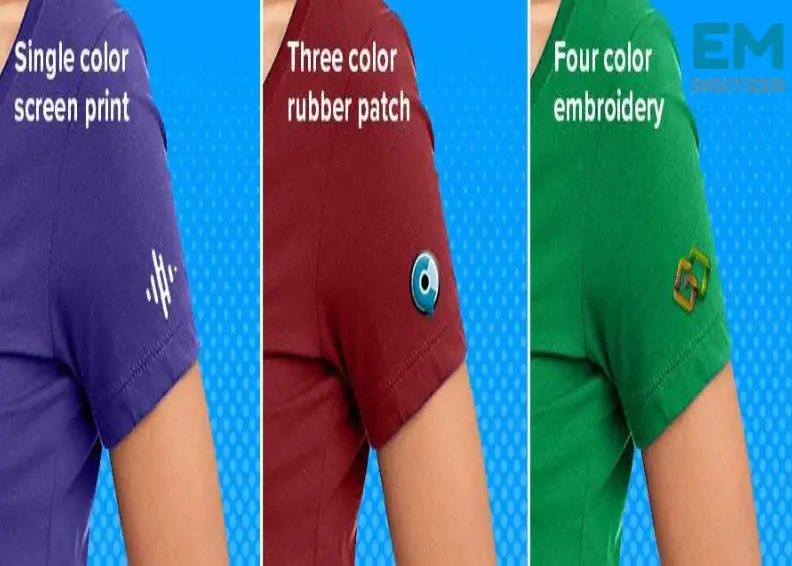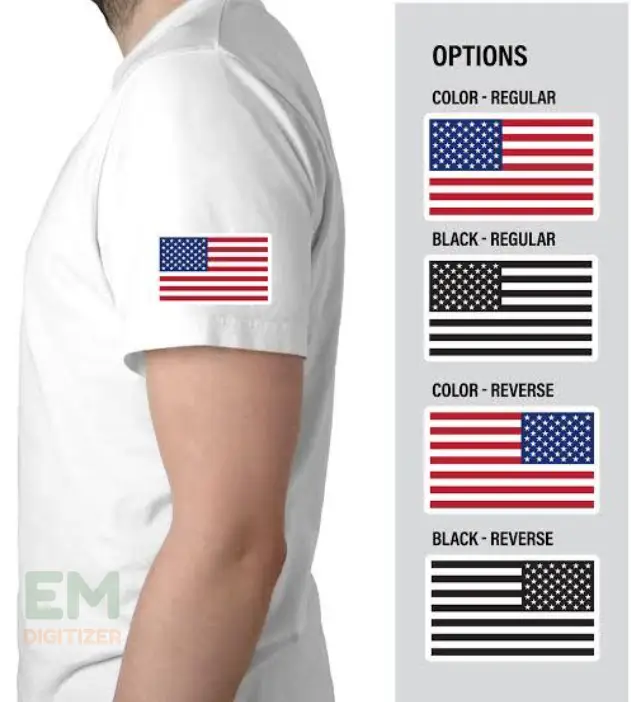Wearing personalized sleeves is the greatest strategy if you want to stand out from the crowd. Clients today seek more creative and functional t-shirts, which is why they prefer printed sleeves. From simple logos to detailed text, there are a lot of options to make personalized sleeves for both casual and marketing use. In this tutorial, we will discuss how you can customize sleeves in the best way and the ideal location for printed design so that your clients return happily. Let’s get through the complete guide step-by-step.
Table of Contents
ToggleEmbroidery Digitizing Services
If you are looking for embroidery digitizing services, EMDigitizer is one of the best embroidery digitizing companies. Providing all types of embroidery digitizing Services. I recommend you try digitizing services.
Order NowGet Free QuoteStep 1. Select the printing location
The first step to making a custom shirt sleeve is to decide where to put your design on the sleeves. There are multiple design options for tee sleeves but size and location matter. Have a glimpse at a few ideal custom designs and print placement spots on your sleeves according to intended use.
The standard location for printing short sleeves:
A logo or pattern that is 2-4 inches wide is the best choice for a custom short sleeve that is set at a distance of about 2 inches from the sleeve’s border. Make sure to place it in the center of the shoulder seam to make it more visible to clients. This measurement suits clients who want simple and standard-sized logos for corporate use.
Small-size logo print
If you wish to use typography or icon-styled sleeves, it must be 2 to 3 inches wide in size. Print it in the middle of the shoulder seam around 1 inch away from the hem area. This location provides the best fit for customizing promotional shirt sleeves featuring details of your brand.
Large-size logo/icon print
You must go with icon-featured t-shirt sleeves that provide a practical way to let others recognize your brand. The large icon is roughly 4 inches, with three to five widths. To achieve a bold effect, place it 2 inches beneath the shoulder seam, as seen on military uniforms. You can also choose this precise measurement to customize a snappy t-shirt’s sleeves.
Standard full sleeves print:
Long sleeves are perfect for displaying your brand or team name vertically or uniquely reflecting your style. In the case of text form, maintain it 15 inches broad and 5 inches high on each side.
Armband sleeves print
Print the design horizontally at the bicep area with around 3/5 Inch (w/h) and center it 6 inches away from the seam. Not very common among traditional custom sleeve options, but your clients might want it.
Customized wrist print
This wrist-printed tee is styled by fashionistas who love to wear personalized and meaningful outfits as a music band artist and some workers. In this case, you can print text or words that are 2-3” wide and placed at a distance of about 4 inches from the sleeve’s bottom edge.
Step 2. Choose the customization option
You can choose any method that helps to make more attractive sleeves. But each method has some pros and cons. Here are a few best options for you to try:
1. Printing
It is the top choice for stylists and corporations to make promotional tees.
Screen printing:
It is the most popular method among other printing types. The reason behind its large-scale use is affordability and easy application. But, it is only suitable for less detailed design. Another downside is less color availability for sleeve print.
Heat transfer printing:
It is another cool option to make desired printed sleeves. It helps create typographic lines and motifs accurately with wide color options. You can also use pre-made printed transfers for custom t-shirt sleeves.
2. Embroidery
It provides a complete solution for individuals and businesses alike for style and durability in clothing. You can create your desired look with embroidery, text, or pattern. The only drawback is the higher cost of labor (except machine embroidery) and material. So, it is not recommended for small-size logos or sleeve patterns.
Step 3. Always choose a simple design for sleeves
It is important to keep your purpose in mind when choosing a design for sleeves. Go for a smaller design for branding because the sleeve area is limited for larger graphics. A basic design produces a clear and attractive appearance. It must be neither too little to be seen clearly nor too large to make a terrible impression.
Step 4. Maintain design uniformity with single-color
We sometimes associate a colorful look with a more attractive one, but using monochrome also does the same in the case of printed sleeves. Even if your brand logo is a mix-match of colors, you can still print one color that provides a clear look to the audience. Highly recommended for screen printing where reducing color is a game changer and fit to budget for bulk custom sleeve orders.
Note: If your t-shirt has other prints in primary colors, use a sleeve color wisely for the best match.
What to choose, a right or left side sleeve for customization?
It entirely depends on your sense of style. If your t-shirt has other printing fragments, let’s say a left chest logo, go with the right sleeve for customization. It gives a complete retail-inspired look to your tee for advertising your brand. But if your tee has a centered print, you can choose any side of the sleeve that gives you the intended look.
Design direction matters!
Here I’m talking about the custom uniform or sports tees featuring flags of their country. For the flag, print stars that are facing the front to fit the sleeve direction. For example, they must be on the left side for the left sleeve and vice versa.
Conclusion
This is a detailed guide about how you can tailor your sleeve to make it more interesting. Sleeves offer a unique approach to meeting customization needs that typical print locations may not. When designing sleeves, take care of print location, personalization method, simple pattern, or logo with the right direction that leaves the creative expression of your brand. Following these steps will draw attention to your tee, which will increase the likelihood of receiving more orders.
Long sleeves are perfect for displaying your brand or team name vertically or uniquely reflecting your style. In the case of text form, maintain it 15 inches broad and 5 inches high on each side.
Go for a smaller design for branding because the sleeve area is limited for larger graphics. A basic design produces a clear and attractive appearance. It must be both too little to be seen clearly and too large to make a good impression.
If you have any questions leave the comments or you can visit our social channels for more updates regularly. We provide embroidery digitizing services if you need digitizing services feel free to contact us or email us.

